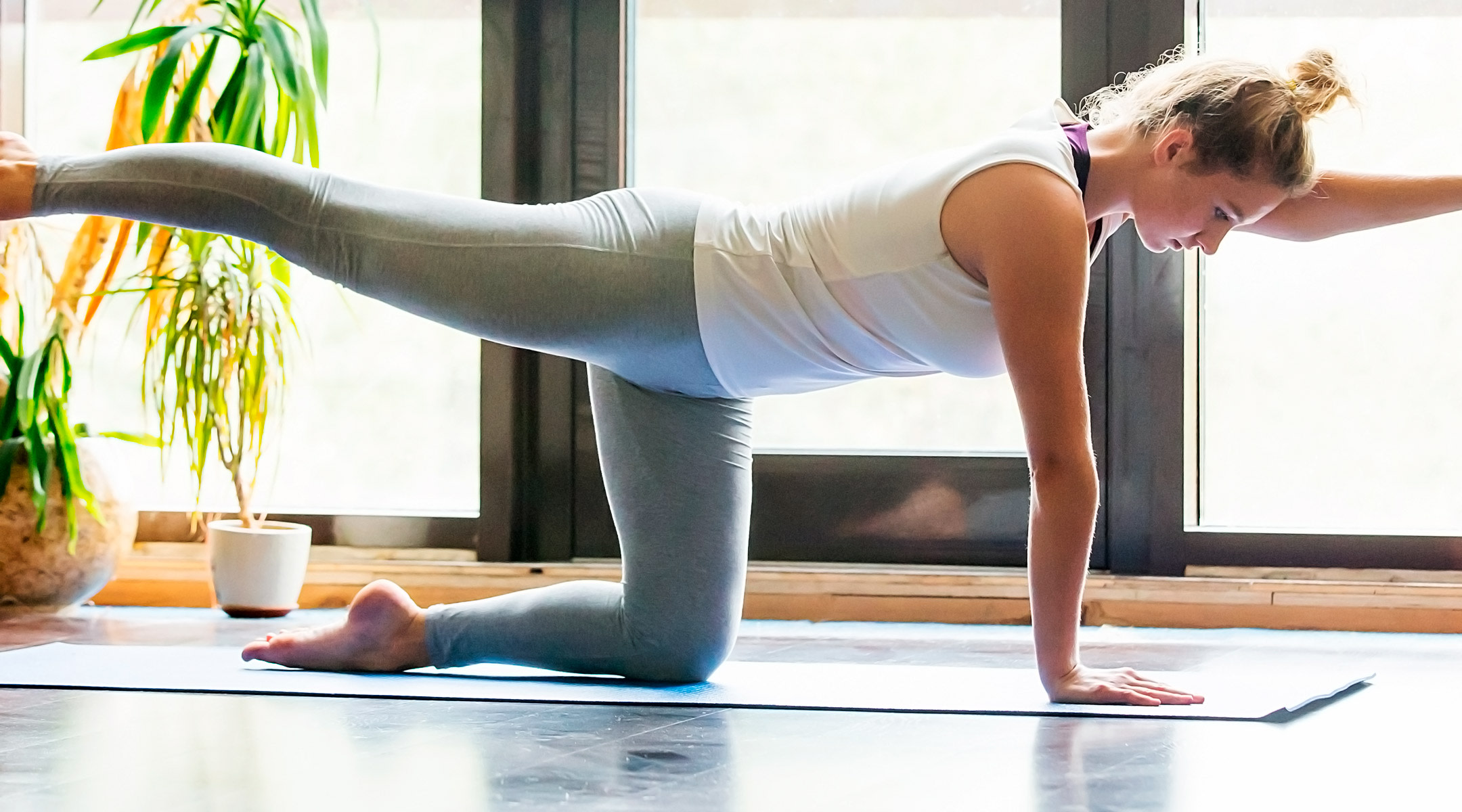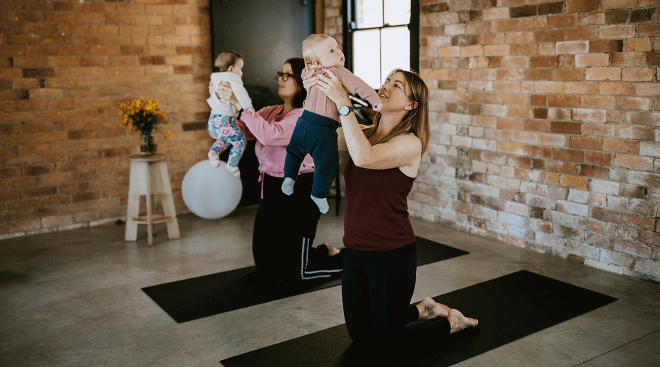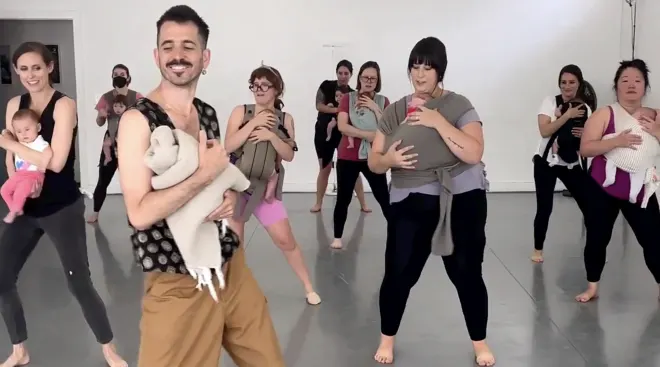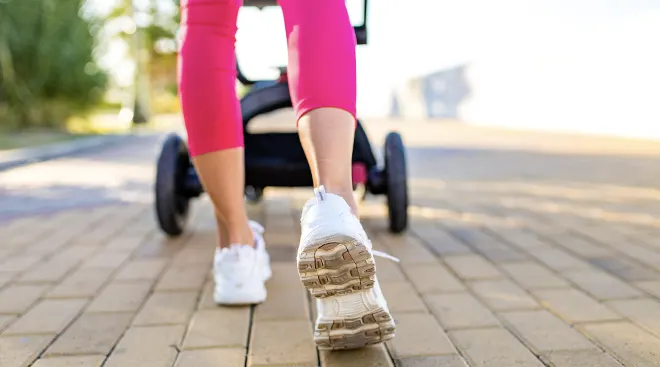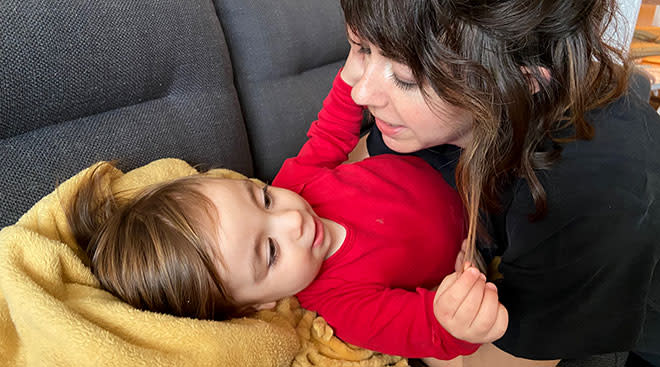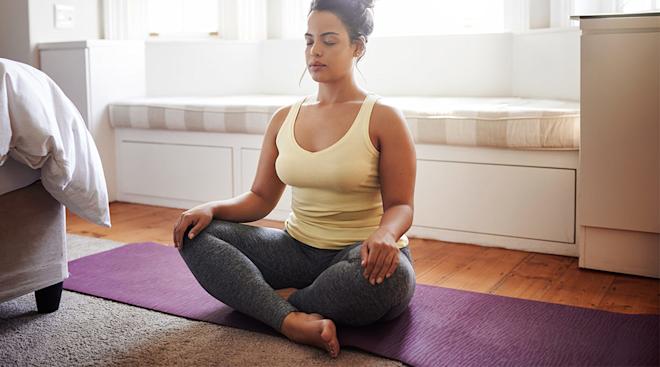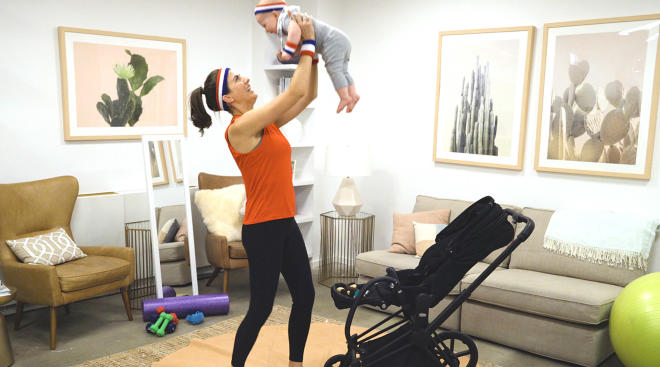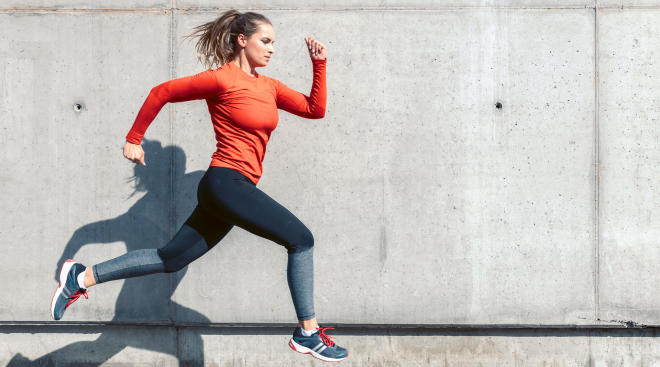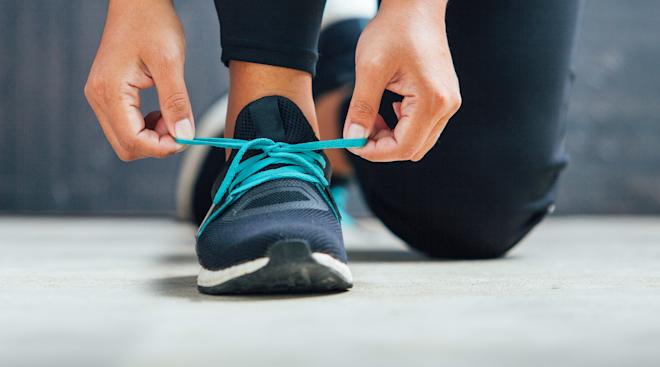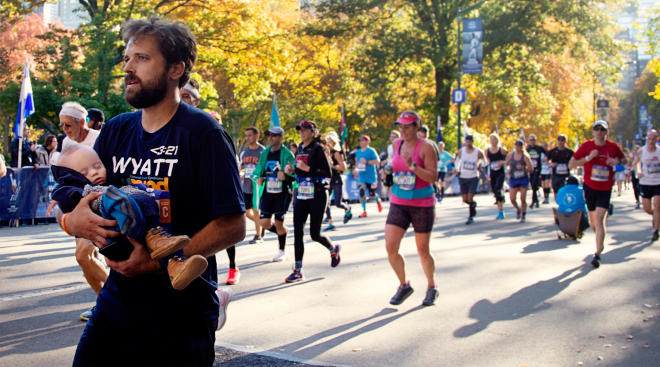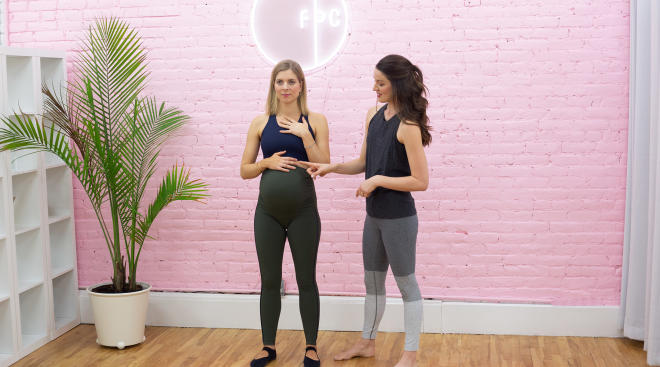How the Dia Method Might Help You Get Your Pre-Baby Belly Back
Ask pretty much any new mom what her post-baby body gripe is and you’re almost always going to get the same answer: mommy tummy—you know, that baby bump vestige that jiggles like Jell-O and won’t disappear even as the pregnancy weight melts away and your biceps start showing definition. Treadmills prove useless. Crunches don’t do a thing. It’s one belly bulge that won’t budge—that is, unless you tackle it head-on with the right workout. For a growing number of women, that workout seems to be the Dia Method, a core-based regimen that promises to prevent mommy tummy when executed before delivery and get your belly back into shape when followed after baby is born.
When researchers at Weill Cornell Medicine in New York City decided to take a closer look at the workout, they found that these women may be onto something: Of the 63 subjects who participated in the workout, 100 percent got their belly muscles into pre-baby shape in under 12 weeks. The results were published in a 2014 issue of the American Journal of Obstetrics and Gynecology, and the researchers are now expanding on the study.
Mommy tummy, mommy bulge—whatever you prefer to call it— happens when the rectus abdominal muscles (your six-pack-ab muscles) separate. It actually has a scientific name: diastasis recti.
You have one rectus abdominal muscle on each side of your torso, and normally they sit right next to each other. But a very pregnant uterus can create a gap between them. The result? Mommy belly. The pair of muscles can move back together again after baby is born, but sometimes the gap remains, and the visceral fat (deep fat that lies beneath the skin, wrapped around major organs) that’s usually neatly packed behind the muscles spills out.
If this sounds familiar, take heart: You are not alone: A 2016 British Journal of Sports Medicine paper reported that out of 300 women, a third still had the condition a year after giving birth.
The problem with diastasis recti isn’t just cosmetic—it’s functional too. Weak ab muscles curb your ability to push during childbirth, which, in turn, can prolong labor. “Core strength is really important, and pregnancy challenges core strength,” says Jaqueline Worth, MD, an ob-gyn at Village Obstetrics in New York City.
After pregnancy, flabby abs continue to be a mark of a weak core and can increase your risk for back pain. (Of course, lifting a newborn and all that gargantuan baby gear doesn’t help either.) “A persistent diastasis can lead to core instability, and this can create all kinds of trouble later on in terms of pain and lack of flexibility,” Worth says.
While burning fat through aerobic exercise can improve matters by lessening what protrudes through the gap, it doesn’t quite close it. And crunches, which move the ab muscles forward, could, in fact, make the bulge worse.
The idea for the Dia Method originated from founder Leah Keller’s private training practice in New York City. She was specializing in diastasis recti rehabilitation. Her clients were so enthusiastic about the results, they encouraged her to make videos so she could share her ideas with women everywhere. Now based in San Francisco, Keller has designed the daily exercise program to help prevent diastasis recti in addition to reversing it after you’ve delivered.
“For the prenatal program, everyone starts out learning the baseline functional core exercise,” Keller says. This offers dual benefits: It strengthens your core but also, and perhaps more importantly, teaches women to become aware of their abs and pelvic floor.
“It’s the connection to these areas that helps women access abdominal muscles during pushing, while simultaneously opening and relaxing the pelvic floor,” says Erin Borbet, MS, L.Ac, a licensed acupuncturist, doula and women’s health expert in Teton Valley, Idaho, who personally trained with the Dia Method during all three of her pregnancies. She now recommends the method to all of her prenatal patients who are dealing with lower back pain or looking for a safe workout.
After pregnancy, the Dia Method is more targeted. All of the workouts are under 30 minutes for the full body, and many have progressive options. Tackle the regimen every day for best results, but even if you do it only 80 percent of the time, you may see a difference, Keller says.
The key is activating the transverse abdominal muscle—a thin sheet that lies deep in your core, underneath your obliques. During pregnancy, it manages the integrity of the abdominal wall. After pregnancy, Keller says, it helps to reestablish the tone and function you had before baby.
The program isn’t just one workout but a system of techniques that incorporates breathing as well as nutritional strategies. At its heart, though, are exercises that target the abs in ways you might not expect.
For instance, instead of full planks, the Dia Method recommends doing a modified plank at the kitchen counter, or modified side planks. Another crucial move, which you would do every day for 10 minutes in various positions, doesn’t even seem like a move at all: With a flat back and fingers on your belly, you take a deep breath and then exhale, pushing your ab muscles back toward your spine as far as they can go.
“I really like the conciseness of [the workout]. I’m using my time well and the results happen really quickly,” says Katinka Locascio, a licensed massage therapist, bodyworker and labor doula who founded Earth & Sky Healing Arts in Long Island City, New York. ‘The results of the Dia Method seem to be really remarkable for something so simple.”
Keller teaches classes in San Francisco, but the workout is also available via an online membership, which includes access to a 24/7 Dia Method community. For some women, this may be as valuable as the exercises themselves. “My clients have enjoyed being able to tap into the group and ask questions,” Locascio says. As for her own experience? “I had minimal diastasis to recover from, which I completely attribute to the Dia Method,” she says. “My core felt intact even after moving a giant baby out of the abdominal space—and that was empowering.”
Plus more from The Bump, Floor Workout with Baby:
Published Novemeber 2017
Please note: The Bump and the materials and information it contains are not intended to, and do not constitute, medical or other health advice or diagnosis and should not be used as such. You should always consult with a qualified physician or health professional about your specific circumstances.
Navigate forward to interact with the calendar and select a date. Press the question mark key to get the keyboard shortcuts for changing dates.
































